Everybody’s got to start somewhere – even Formula One world champions. Fernando Alonso, Lewis Hamilton and Michael Schumacher may now hold a place among the pantheon of motorsport’s greats. But before they hit the big time they spent several hard years honing their ability at the grassroot level of motorsport.
The grassroots are where the legends of the future are forged; and it is to the grassroots that the Renault F1 Team is going as it grooms the next generation of Formula One world champions.
The Renault Sport Academy is the vehicle through which Renault identifies and nurtures upcoming young talent. It has one purpose – to scour junior single-seater categories for Renault F1 Team’s next Formula One champion.
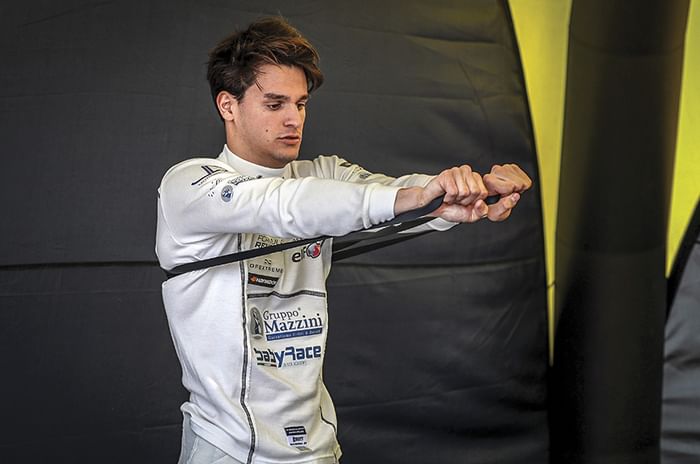
Practically, every Formula One team today has a driver development programme of some sort in place. These programmes look for the brightest junior talent and give them whatever they need – from crucial funding, to access to the best fitness training – to help them rise up the ranks.
The benefits are obvious. For drivers, it’s a golden opportunity to progress up the single-seater ladder with the sort of support they wouldn’t be able to muster on their own. The teams, meanwhile, gain access to a pipeline of talent that they can tap into for years to come.
The Renault Sport Academy is one of the biggest among such programmes run by a team on
the grid. It boasts a multi-national roster of eight of the most talented young drivers around today;
all at different stages of their careers and racing in different single-seater categories.
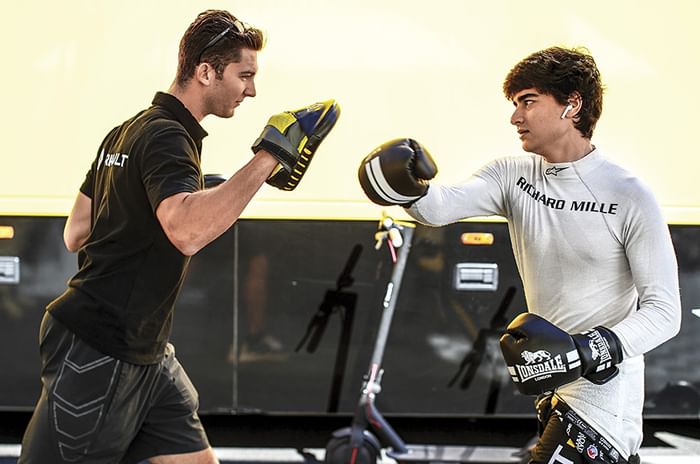
Some like China’s Guanyu Zhou race in Formula Two – one rung below Formula One on the motorsport ladder. Others like Christian Lundgaard and Max Fewtrell race in Formula Three while Victor Martins is at an even earlier stage in his career, competing in the manufacturer’s own bespoke Formula Renault series.
However, with so many junior series and so much promising young talent to choose from, Renault are spoiled for choice. The responsibility to ensure only the brightest talent is recruited to the Academy falls on Mia Sharizman.
A lawyer by training, Mia Sharizman heads the Renault Sport Academy Programme. His job is to hunt for fresh talent but also to look after the drivers that are already on the Academy roster to make sure they are delivering to the best of their potential.
“The idea is very simple,” he explains. “We recognise three piers in single-seater motorsport – Formula Two, Formula Three and Formula Renault (which is in between Formula Four and Formula Three). We use Formula Renault as a means of where we start the pool, from where we get the pool of drivers.”

Renault are the only manufacturer on the Formula One grid to run a junior series of their own, which gives the company easy access to young talent.
The driver who wins the overall championship and the best-placed rookie are automatically inducted into the Renault Sport Academy as a reward for their success.
But that doesn’t mean Mia Sharizman can afford to ignore other junior single-seater series. Assisted by two scouts, he scours various regional Formula Four championships (and also karting) for the driver he can turn into the next big thing.
“We have two scouts that go to a majority of the Formula Four races and karting races. They give us information. We have them going around every championship.”
“It’s a bit like baseball where you have scouts going around the minor leagues,” he says. “At the same time you do get approaches from managers, you get approaches from driver coaches – watch out for this guy, or that guy. So it’s the same system as football.”
Identifying talent is just the first step, however. Some drivers Mia Sharizman evaluates are as young as 14 or 15. They are all good enough to cut it on pure talent alone. But motor-racing is a mental game and Mia Sharizman has to judge whether they have the mental make-up to handle what will, hopefully, eventually be the pressures of the Formula One environment.
It’s not an easy job and Mia Sharizman has to take plenty into consideration.
“To me, character off the track determines how you are on the track and that’s something we do,” he says. “We speak to them but also one of the most important things is the support system. It’s a mental game.”
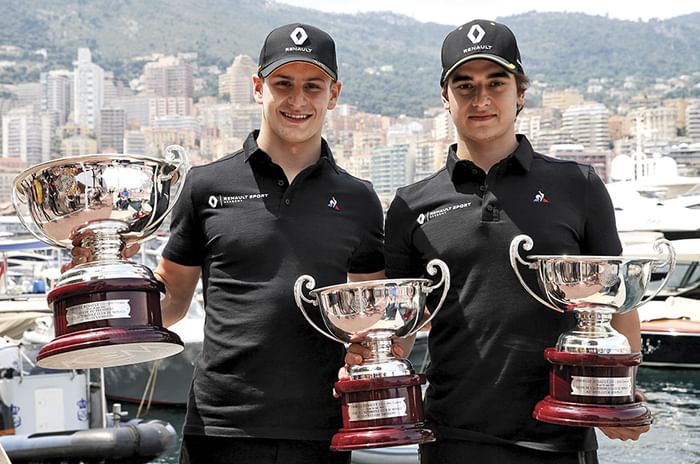
“To me, if you were to be selected, the talent is already there, it’s a given. It will be harnessed, it will be developed. But the external factor is sometimes beyond your control,” he goes on to explain. “That is why my weekend is spent sitting down with the support network and the managers more than the drivers. The more you sort that out the more they will help you to sort their kid out.”
Once a driver makes the cut and makes it through Mia Sharizman’s rigorous vetting process, their career is in expert hands. They get the best of everything, from training sessions in Renault F1 Team’s High Performance Centre (HPC) at the squad’s Enstone headquarters to the best nutrition, media training and, most importantly, career guidance.
Drivers risk damaging their careers trying to climb too quickly up the motorsport ladder. They may not be aware of what the best championships to race in are or even who the best teams to drive for are.
As part of the Renault Sport Academy, they avoid these pitfalls and are placed with the best possible teams in the best possible championships where their talent can flourish.
Fitness is a major area of focus and Renault F1 Team’s physio, Dave Thompson, personally makes sure that Renault Sport Academy drivers are the fittest they can possibly be.
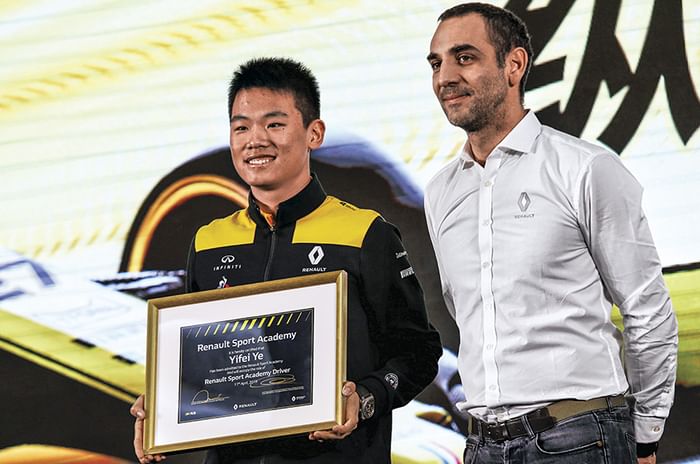
He is one of the first people new recruits to the Academy meet. “We have to gain a history of that driver,” says Dave Thompson, who used to be Romain Grosjean’s physio and trainer. “Everything is specific and individual to that driver, no drivers are the same, you’d never give them the same programme or experience in that sense.”
“So one of the first things we do is do a body composition screen, we’ll do functional movement screens, posture analysis, so they’re the basic level we start. So we can identify any weaknesses, any injuries previously, any potential injuries, look at how the driver moves, look at any discrepancies whether it’s muscular or skeletal, if there’s asymmetry,” he says.
“We’d like to think that depending on their background and age they have an element of fitness. It’s a part of their job, potentially. So we like to think most people might have an idea or be at a certain level but we have some drivers that are so young they’ve never been in the gym before, some don’t like to train. But we have to explain the importance of that.”
“Once we’ve got the overall picture then we do some fitness testing,” Dave Thompson goes on to explain. “ I will write a report then liaise with Mia Sharizman and the driver and set goals – this is the championship we are in now so this is the basic level what we need to be.
“But we always say we need you to be ready for the next step now. So we like to think that they’re ready for that next step.”
Dave Thompson varies the routine for the drivers based on whether it’s the off season or race week. He also gets them into the right sleeping patterns to coincide with their race schedules and gives them a nutrition plan.
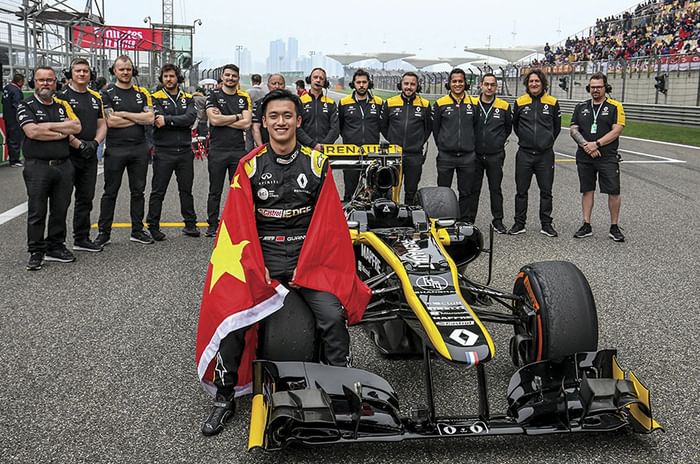
But despite access to expertise like that of Dave Thompson’s, making it to the Renault Sport Academy does not guarantee a driver a place in Formula One.
All Academy drivers have a Formula One clause built into their contracts that the Renault F1 Team can activate any time, turning them into Formula One drivers overnight, subject to Super License rules.
But it’s not a free ticket to an F1 seat, with every driver having to meet annual targets. “The targets have to be there,” says Mia Sharizman. “We are a corporate company with corporate governance. Renault are investing in these young drivers. We have accountability. So the targets are there but they are realistic targets.
“Our drivers need to know firstly their endgame. When we take on a driver it is with the intention of getting them to Formula One. If not, why do we take on the driver?”
Inevitably, not all drivers will make it. Renault F1 Team has only two seats at its team. Eight into two unfortunately doesn’t go and Mia Sharizman has the unenviable task of telling a driver he’s going to be dropped. It’s not an easy task, as it could potentially spell the end of a driver’s Formula One dreams.
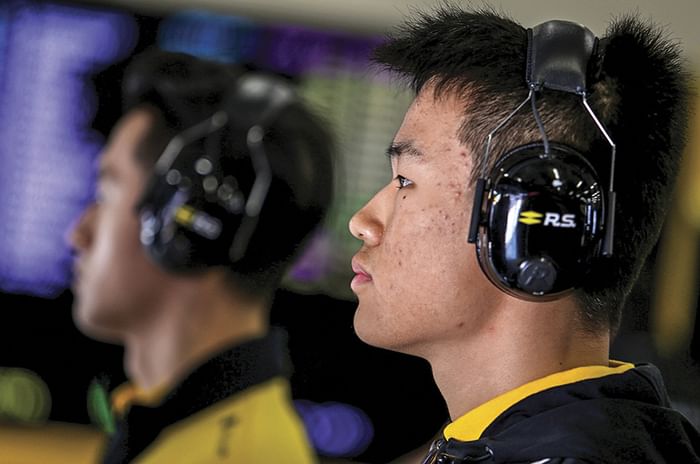
“If you do it honestly, if you’re honest about your job, you do it properly and then your conscience is clear,” says Mia Sharizman. “You have the reasoning, you have the backing, you have all the data.
“To break the news to them is difficult, but the world goes around and you never know. My last parting words are always, ‘You never know what will happen in the future.”
Still, the ultimate goal remains to get a Renault Sport Academy driver into Formula One and in the longer term, develop him or her into a world champion for the Renault F1 Team.
“Timing is everything when you want to slot a driver into Formula One,” says Mia Sharizman. “That’s the biggest target.”
Click here for Renault India models, prices, reviews, images, videos and more details






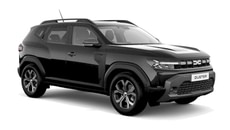

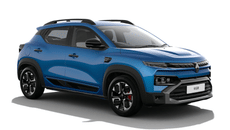
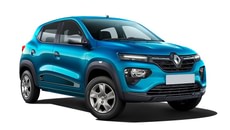

.jpg?w=234&h=156&q=90&c=1)



.jpg?w=234&h=156&q=90&c=1)


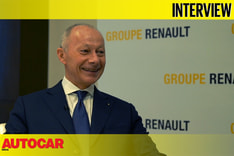


Comments
Member Login
Personal Details
No comments yet. Be the first to comment.